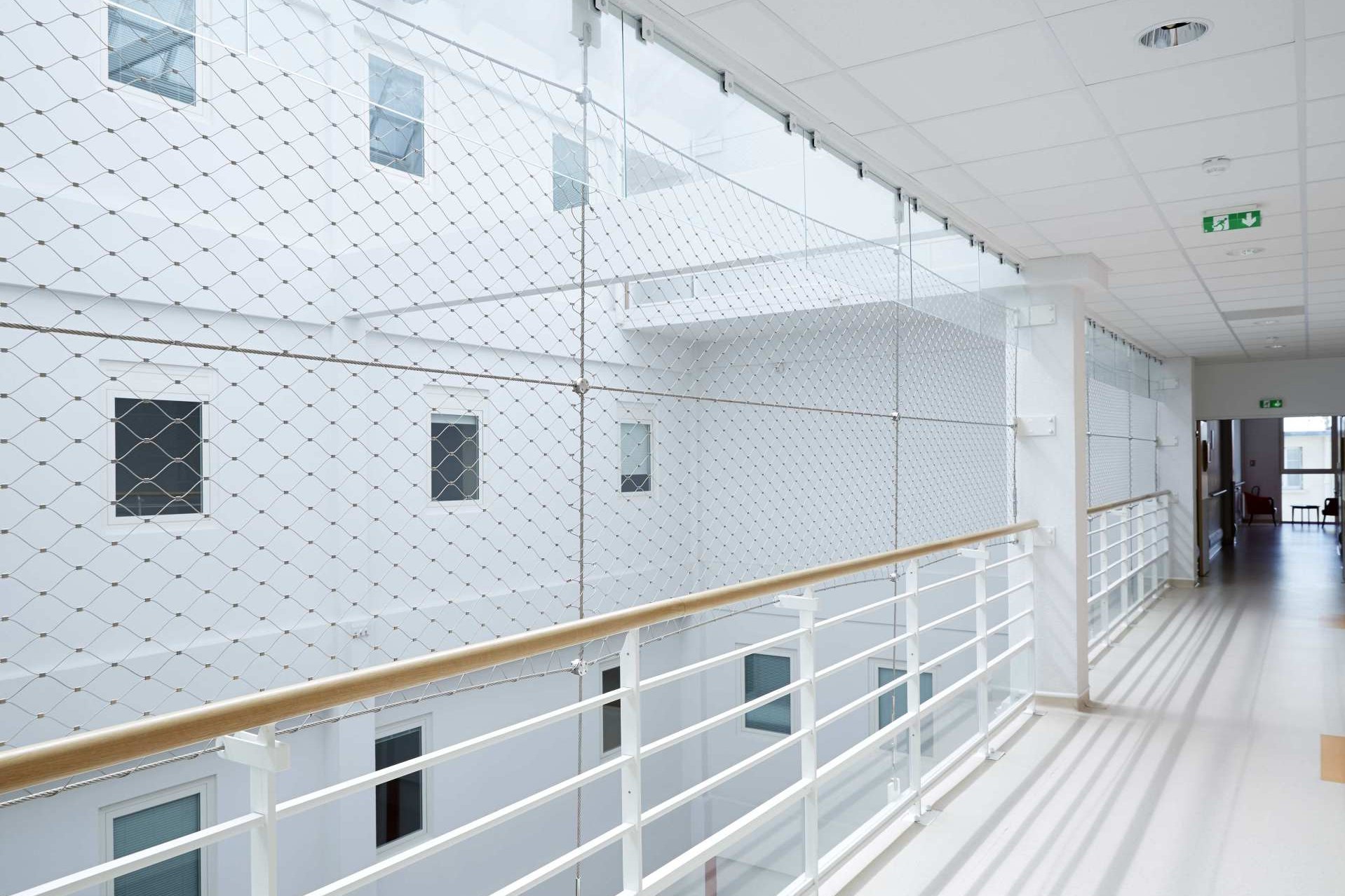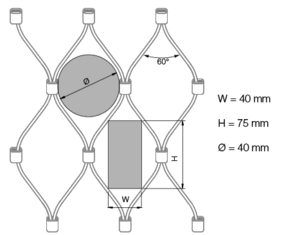
Regulations and experience
Webnet barriers and climbability
Railing infills are among the most common applications of Webnet. It is therefore all the more important that they comply with the applicable standards.

What do the regulations say? It’s complicated
There is no definite global regulation, such as an ISO norm, that covers all use cases and applies to all countries. Depending on the country and sometimes even region, different regulations apply to the safe design of barriers. Ultimately, it’s the local building supervisory authority that decides.
In Switzerland, there exist the recommendations of the bfu, the Swiss Council for Accident Prevention, and other regulations. In the English-speaking world, rules and regulations on climbability differ widely. Much recent debate in the US discussed the ‘ladder effect’ of horizontal railing infills, but the I-Codes do not explicitly address the question of climbability. Our partner in Tensile explains the situation in Australia.


Why is the question of climbability so important?
Depending on the intended use, it is crucial to ensure that vertical wire rope nets are very difficult to climb or climb over. This is mainly due to safety and liability aspects:
- Function: even though no barrier guarantees complete protection: a fence that is easily climbed over defeats its purpose.
- Safety standards. In Switzerland, the bfu recommends that a guardrail of at least 1 meter in height be provided above a fall height of 1 meter.
- Child protection. Children like to climb or play with the net openings. To prevent falling through and injury, the bfu recommends that guardrails up to a height of 75 cm must not have openings through which a ball with a diameter of more than 12 cm can fit. Similarly, DIN 18065 stipulates that the clear distance between railing sections must not exceed 12 centimeters.
- Vandalism. Outdoor fences and ball nets are often misused as climbing equipment. This damages the nets and can result in unsightly bulges.
Is Webnet climbable?
Webnet is a very adaptable stainless steel mesh. An appropriate selection of the wire rope diameter and mesh size ensures that a barrier is difficult to climb. Although the standards do not allow a definitive statement, Jakob Rope Systems has implemented countless guardrails with Webnet that have been accepted by local regulatory certifiers.
In our experience, Webnet configurations with a mesh size of 40 millimeters or less meet the recommendations of current codes and are generally accepted by authorities.
Webnet with vertical meshes is best suited for climb-proof fences. Hands and feet have a hard time getting a grip in the downward narrowing mesh openings. The smaller the meshes, the less climbable they are. On the one hand, it is more difficult for feet to find a foothold in small meshes, and on the other hand, the flexible net construction offers little support and gives way as soon as one tries to climb the net.

Two types of climbability
It is worth clarifying in advance whether Webnet can be mounted in such a way that it is impossible to climb over, for example, by mounting it over the entire floor height. With such constructions, a mesh size of up to 60 millimeters is possible. This is more economical and at the same time safer. Visibility impairment is minimal thanks to the small rope diameter of 1.5 millimeters and the larger mesh size.
On the other hand, all constructions where there is a risk of falling from a height of more than one meter should be equipped with Webnet of mesh size 40 millimeters or smaller. Our experience tells us that these constructions usually comply with the standards. However, there is no guarantee local certifiers will accept it. In case of doubt, the responsible building supervisory authority will decide.
Our support
Are you planning a railing with Webnet or a wire mesh? Ensuring that your railing meets regulations at an early stage will safe much hassle. Jakob Rope Systems and its local partners will be happy to advise you, not only on the subject of climbing-safe barriers, fences or nets.
Downloads

Safety and protection systems with Webnet are timeless in their design.
Download
